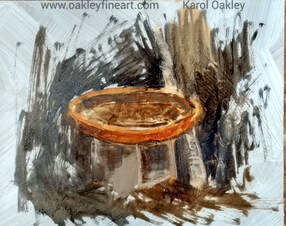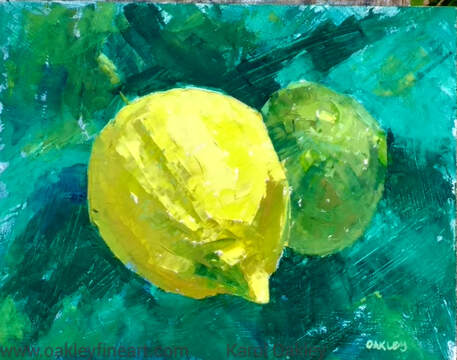 Canson Mi-Tientes paper 160gsm Canson Mi-Tientes paper 160gsm Do you use Canson Brand Mi-Tientes Paper ? Canson Mi-Tientes paper is a paper used by artists working in pastel, charcoal and graphite. This paper is 160 gsm in weight, made from a percentage of cotton rag which is dyed in the pulp, machine rolled and acid free. It complies with ISO Standard 9706 and has no optical brightness additives but does have a mould inhibitor in it. So what does all this mean to us as artists? When I first started painting with pastel I used this paper. There wasn't the choice like today. This paper is still good value and I have been using it this week on a project so I thought I'd share this tip with you. This paper is 160 gsm in weight which makes it fairly light and strong enough to take a bit of pushing and rubbing with dry media, pastel in particular. I don't use this paper with water or wet stuff, though some artists do. It buckles really spectacularly and takes years to flatten out. One pastel I did in the early days on this paper is still showing signs of being whetted. It still has a sag in one part after all these years. Live and learn! You may probably already know this, or maybe you don't, both sides of the Canson Mi-Tientes 160 gsm paper can be pastelled on. One side of the paper is patterned with a chicken wire/honeycomb/tulle pattern on it. The other side is smooth. If you already use this paper here's the question, which side are you on? My preference is the smooth side as it takes more layers of pastel than the patterned side. The smooth side doesn't' show that chicken wire/tulle pattern after the painting is finished. On the smooth side, by using a light touch and layering my pastel stroke, I can do more. The tooth is deep enough to take up to 10 layers with a light touch and doesn't leave a pattern. The patterned side frustrated me as soon as as the chicken wire/tulle holes filled up, (the tooth), the pastel just slipped off, and it didn't take much for that to happen. This side is great if you want these patterns in your painting. I have a light touch for painting with pastel and this still didn't help much on the pattered side. The Canson Mi-Tientes paper is good value. It comes in 50 colours that are light resistant and ranges in tones from light to dark. It is a low cost paper, that comes in a range of sheet sizes, in a pad and including by the roll. Best of all it has two usable sides. If you haven't done so give it a try on both sides. There are no prizes for this and no-one is paying me to sell you on this paper. As I said earlier it was a paper I was using during the week and wondered how many of you know about this double-sided paper, and then of course, who uses which side. Feel free to send me an email, or leave a comment here to say which side you are on and why. with best wishes for all your paintings, Karol Oakley
1 Comment
 an unfinished plein-air painting an unfinished plein-air painting Recently I was painting on the coast with a friend. we both finished our paintings at the same time. My friend was so happy that she had finished in under two hours. I was so cranky that I took that long. So the question has come up again, how long should you take when out painting plein-air? is there a time limit? The light conditions will determine the length of time spent painting, and of course we know this, but.... I like to think of Monet and his outdoor painting of hay stacks and water lilies. He would go back each day at nearly the same time to keep painting in the same light. 'Nearly the same time' as he knew that the light changes everyday just that little bit, getting darker later and lighter earlier in summer for instance. Monet would adjust his painting time to suit this by minutes or tens of minutes. What ever it took to get the same light and therefore the same colours, tones etc. We didn't have that luxury, we only had a short time frame and made the most we could of it. Todays plein-air painter seems to aim to get it all over and done with in one sitting 'allaprima' style. I'm not judging or commenting, it is only an observation. I am one of these allaprima plein-air painters. To do this though, I need to pick a window of time that suits the speed I paint. Like it's no good to me if I go out at sunrise to paint as I am to slow. A sunrise sees a fast change of light and needs a fast painter and a prepared painter. (and one who likes to get up early.... not this little black duck). There is no right or wrong on the time it takes to paint on site. As a guide it is said that two hours is the longest it should take. In that two hours the light will have changed, the shadows moved and the colours are affected. Painting from say 9am to 11am the sun is reasonably high in the sky in late spring and summer and early autumn. So the changes while noticeable are not unfavourable for the learner or the experienced painter. My friend and I started at 9:30 am and finished at 11:00am. We were painting at the beach in the scanty shade with a full blown onshore wind coming at us and getting stronger. I saw the light wash out the colour on the rocks, the tide come in and the shadows move and darken. Granted the conditions deteriorated, but the light remained fairly consistent for that first hour. The last half hour was misery. I fiddled and pushed and poked at the painting trying to make it improve, make it better. Sound familiar? Usually I allow one hour to plein-air paint with the proviso that it doesn't have to be a finished painting. This then lets me have the freedom to paint at the pace I want with out the pressure to finish. I can work with the light and if its not finished to bad. This gets back to the reason I am plein-air painting in the first place, and the is to learn. And you know what? Sometimes less is more in a painting. I'm happy with this plein-air sketch, I call it a sketch as it's an unfinished painting. Most times I am finished in one hour and this isn't to brag, it's to show you that with practice, the length of time it takes to do a painting gets shorter. There are some useful tips to help get to that shorter time.
So how long do you take for plein-air painting? Today's painting was done in one hour. (see below) I concentrated on the lemons, which is the focal point and what the painting is about. I didn't get a good background or even finish it enough, to bad. I said what I wanted to say, expressed the feelings of the zesty ready lemon and its green friend and that was it. Painting happy is my motto, do what matters to you and enjoy the process, in a shorter time!! best wishes, Karol There has been no rain for longer than the 42 days that I have been plein-air painting each day. A heat haze and smoke in the air has kept the look and feel off all the paintings I have done, warm and hot. The dryness of the land is reflected in all the paintings until today.
Today is different. A cold front and storm came through last night and washed the dust off, cleared the air and sparked an energy to all living things, so much so it's almost palatable. In 10 hours the grass has changed colour, ever so slightly, but it has changed. The sky colours are different, less red and more blue. Nature is amazing! My plein-air excursion was later today, 11am. The air is clean again it feels like a real spring day and not a summer day. It is curious to compare today's landscape painting with a 'yesterdays' from the 42 painted in hot hazy conditions. Painters who live in a more 'hectic' climate will be used to this change of light and colour. As weather conditions change these painters will be quicker to see, or notice this, or maybe not at all, as it is too fast a change? I'd love to hear from painters who live in this sort of environment as to how it effects their work. Plein-air painting has been a gold mine for artists wanting to learn by observation. We have all heard those sayings about 'the more you look the more you see' and 'learn by brush miles', they are so right. Observation is only one aspect of what we can learn from Mother Natures Academy. I'm putting up two painting photos today that show the difference a day makes. Yesterday was warm and threatening. Today is cool and damp. When I am painting my aim is to relate the feeling, the mood of the moment and of course the weather has a lot to do with that. What are your comments about these two paintings? (Use the turquoise comment box to the left.) THANKS AND HAPPY PAINTING, Karol Both are oil on board 10 x 8" The one on the left is a palette knife painting and the one on the right is made with a brush. PS: Both are for sale, and priced at AUD$200 each. Email me if you would like to own one or both!! at [email protected] |
The Curious Artist Blog-
talks about everything and anything to do with painting. It's my aim to share techniques, tips, tricks, adventures, products, paintings, educate, inspire and foster the appreciation of painting. I welcome your feedback and questions and don't promise to post regularly, but to let you know when I do post . I'l give it my best shot to answer your questions and if I can't I'll let you know. Gee I may even be able to give you the name of someone who can answer. Either way this blog is about art, artists and everything to do with painting and drawing, being informative, heck maybe even inspiring, all aimed at making painting enjoyable. I sincerely wish you to join me on this adventure. best wishes, Karol AuthorKarol Oakley Archives
February 2023
Categories |
Karol Oakley is a Professional Artist and member of :
The Pastel Society of Australia (PSA)
Australian Guild of realist Artists (AGRA)
National Association of Visual Artists (NAVA)
Pastel Society of Southern California
PROUDLY AUSTRALIAN MADE
Oakley Fine Art is the registered Australian business for Karol Oakley Copyright Protected All Rights Reserved
The Pastel Society of Australia (PSA)
Australian Guild of realist Artists (AGRA)
National Association of Visual Artists (NAVA)
Pastel Society of Southern California
PROUDLY AUSTRALIAN MADE
Oakley Fine Art is the registered Australian business for Karol Oakley Copyright Protected All Rights Reserved
Proudly powered by Weebly






 RSS Feed
RSS Feed